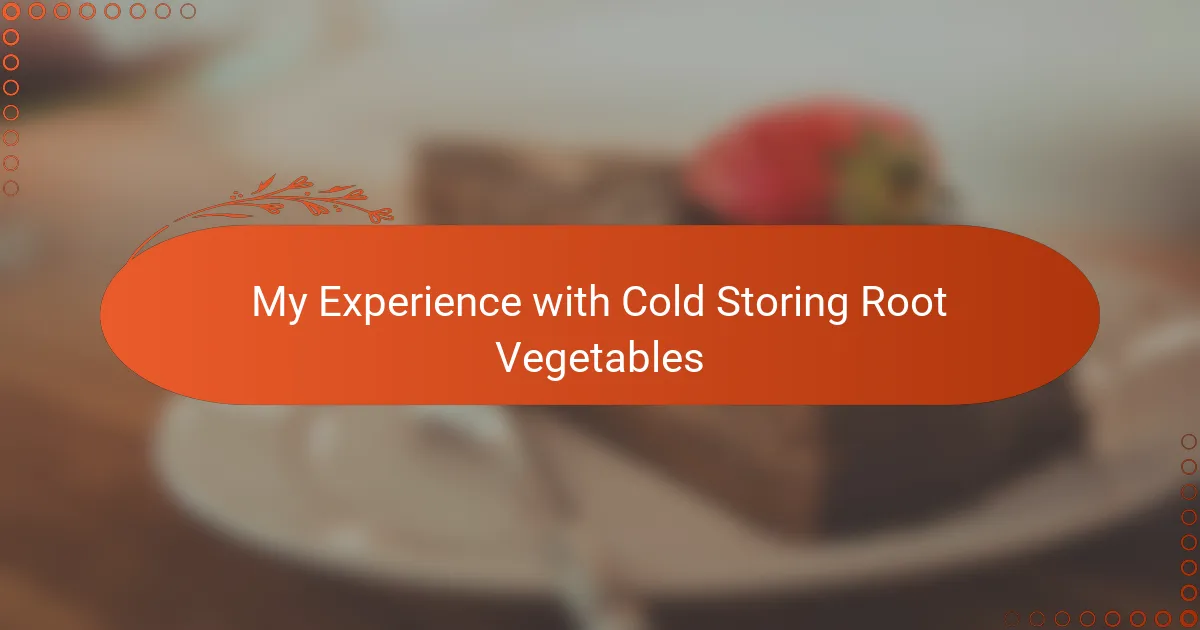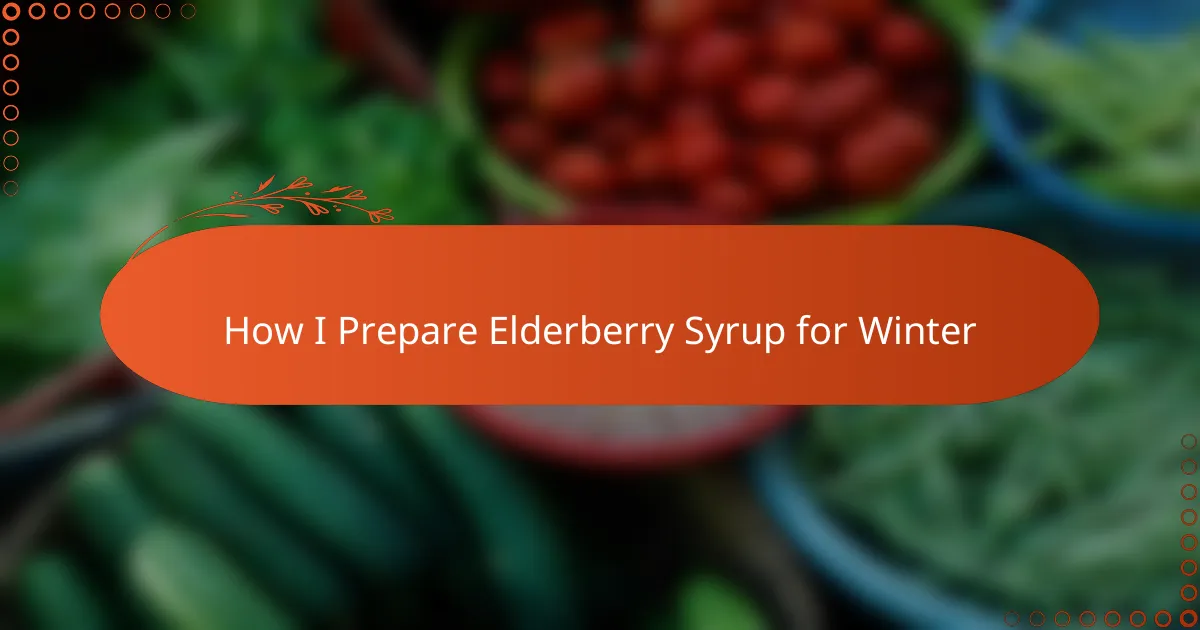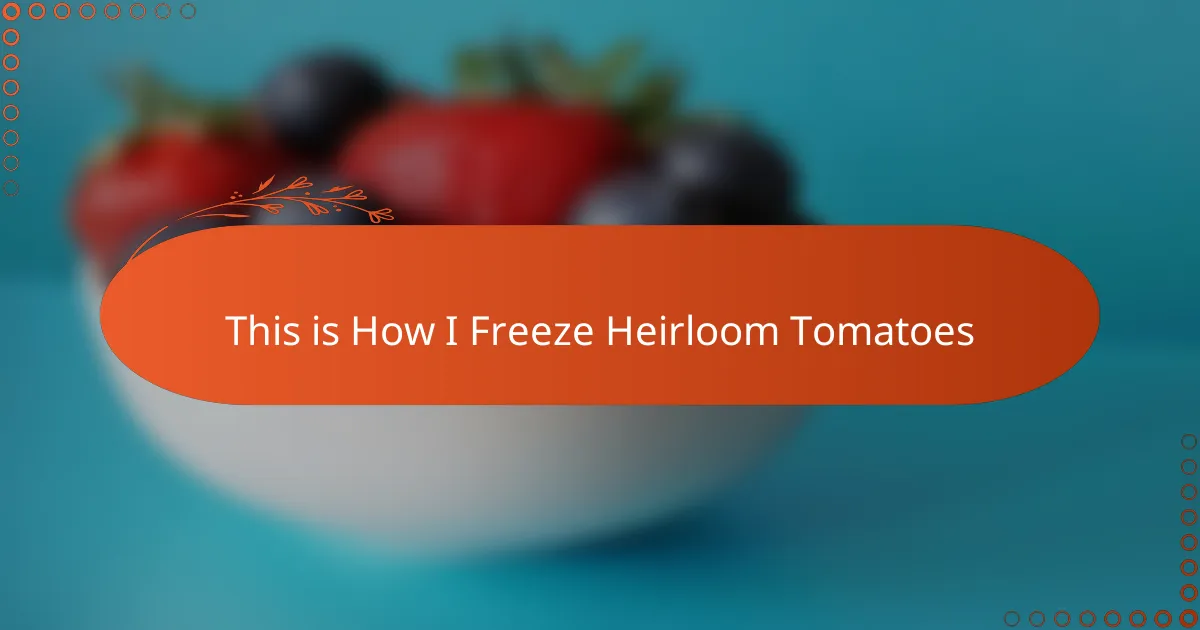Key takeaways
- Cold storage preserves root vegetables by maintaining a cool, humid environment, preventing decay and retaining flavor.
- Proper preparation, including gentle washing and trimming tops, is crucial to prolong freshness and avoid spoilage.
- Maintaining the ideal temperature (32-40°F) and high humidity (85-95%) with good ventilation is essential for successful storage.
- Cooking cold stored vegetables with patience and simple seasonings emphasizes their natural flavors while ensuring the right texture.
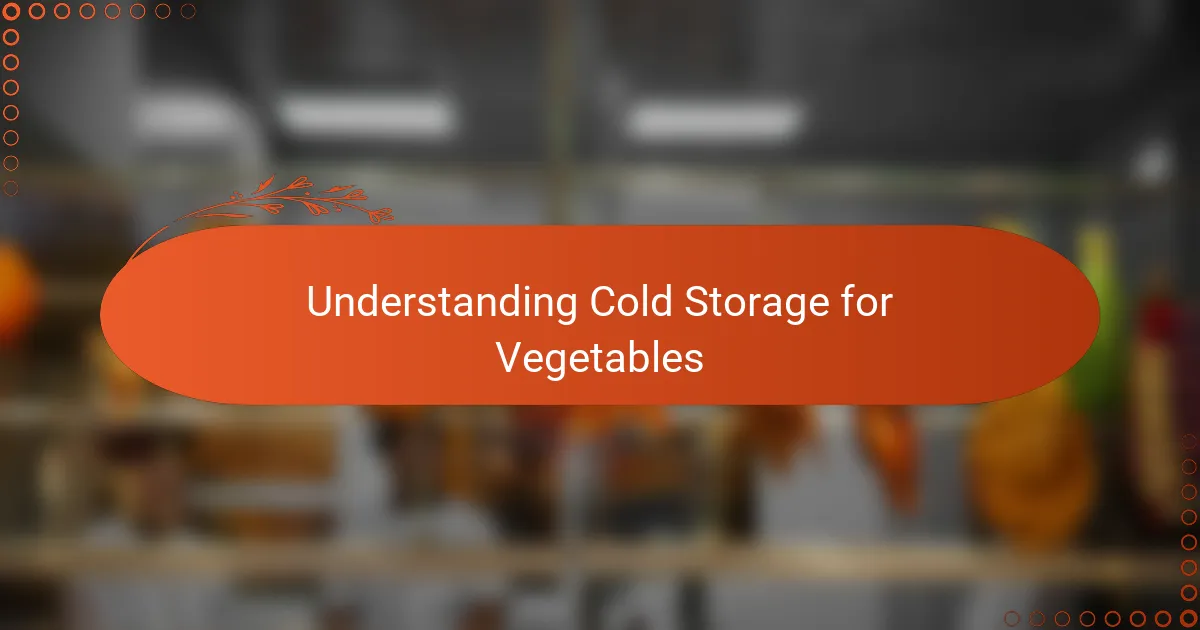
Understanding Cold Storage for Vegetables
Cold storage is a simple yet crucial technique I’ve come to appreciate deeply in preserving the freshness of root vegetables. By maintaining a cool, humid environment, it slows down the natural decay process, keeping carrots, potatoes, and beets crisp and flavorful for weeks. Have you ever wondered why those store-bought roots last so long? That’s the magic of controlled temperature and humidity working behind the scenes.
In my early attempts, I didn’t realize how sensitive these vegetables are to temperature fluctuations. A chilly basement without proper humidity turned my sweet potatoes shriveled and disappointing. This taught me that cold storage isn’t just about putting veggies in the fridge—it’s about creating the right conditions that mimic their natural underground environment, which truly makes a difference.
What really struck me was how much cold storage transformed my homestead cooking. Having a stash of fresh root vegetables ready to use, even in the depths of winter, gave me a comforting sense of self-sufficiency. It’s fascinating how such a simple preservation method can sustain the flavors and nutrition of the harvest over time, inviting me to get creative with recipes all year round.
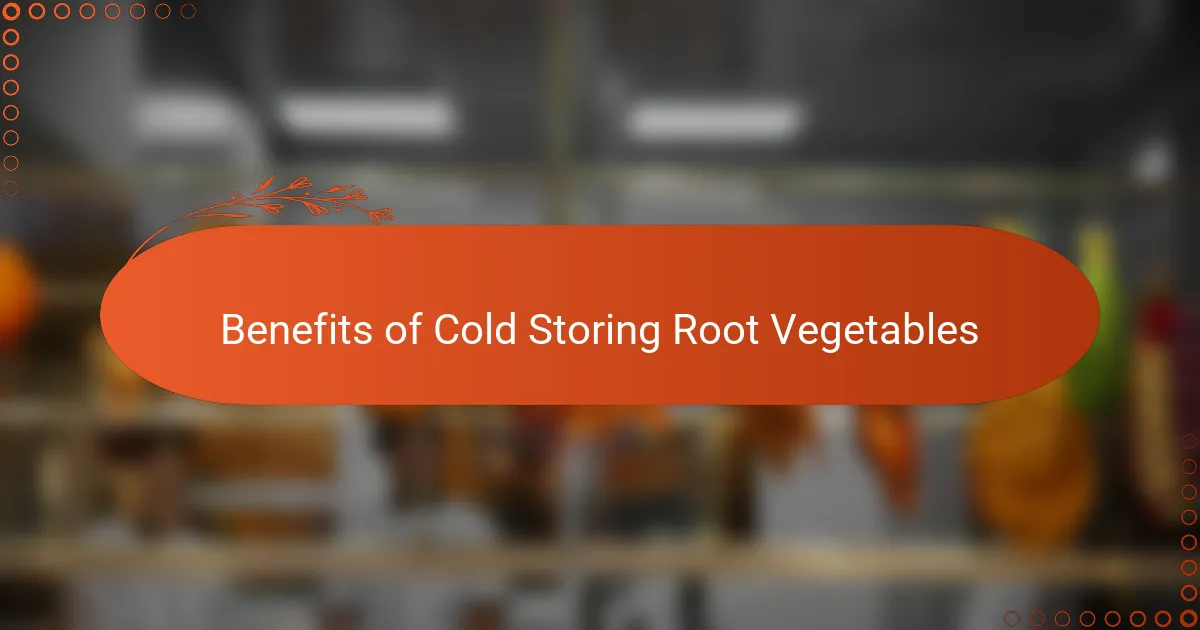
Benefits of Cold Storing Root Vegetables
One of the biggest benefits I noticed with cold storing root vegetables is how much longer they stay fresh. It was surprising to me that by just keeping them cool and humid, I could enjoy crisp carrots and firm potatoes weeks after harvest. Have you ever pulled out a sad, shriveled root from storage? That was me before I learned the right technique.
Another thing I appreciate is how cold storage helps preserve the natural flavor and texture of these veggies. I remember tasting a beet after a month in storage—it still had that earthy sweetness I loved, unlike the bland, mushy ones I tried freezing before. It truly feels like you’re holding onto the garden’s taste, even when it’s dark and cold outside.
Cold storing root vegetables also gave me a deeper connection to the rhythm of the seasons. Knowing that my pantry holds not just food but stored sunshine and nutrients makes me feel more rooted in my homesteading journey. Isn’t it amazing how a simple method can bring so much comfort and creativity to the kitchen all year long?
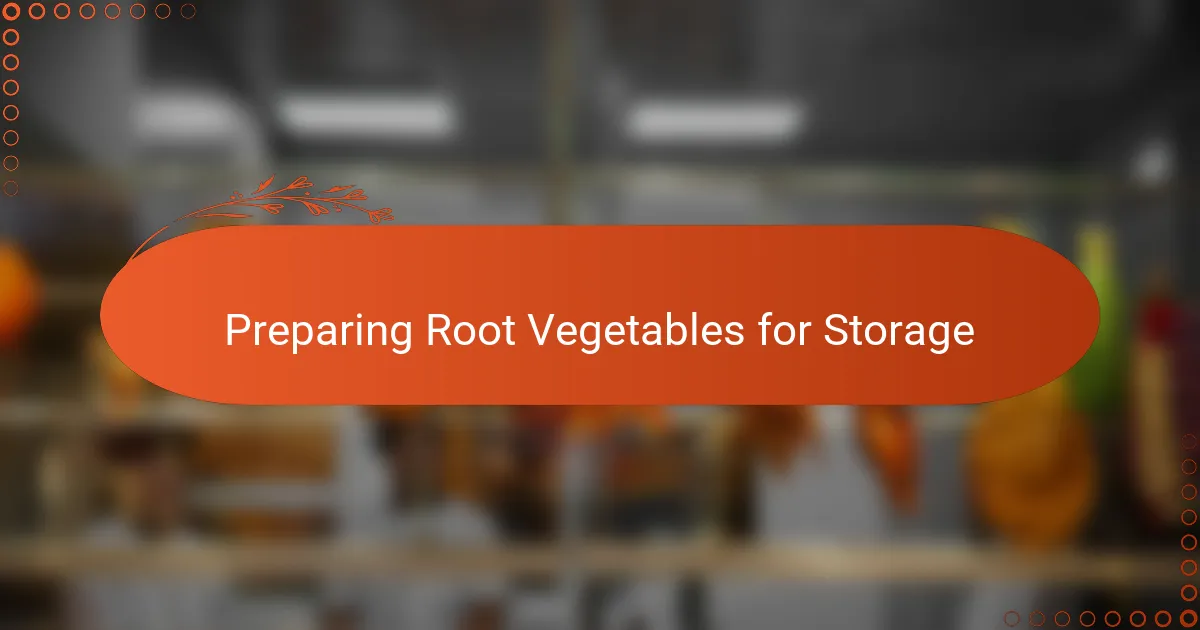
Preparing Root Vegetables for Storage
Before storing, I learned that prepping root vegetables properly is just as important as the storage environment itself. Washing off dirt gently without soaking the roots helped me avoid mold, but I quickly realized some, like potatoes, do better if left unwashed to protect their skins. Have you ever noticed how skins can act like natural shields? That little detail kept my potatoes from spoiling too fast.
Trimming the tops was another step I couldn’t overlook. Cutting off the leafy greens right at the stem helped reduce moisture loss significantly. At first, I thought leaving the greens on might preserve nutrients, but I soon understood that those greens actually draw energy and water from the root, causing it to wilt prematurely.
Finally, I made it a habit to inspect each vegetable for any bruises or cuts before storing them. I once stored a single damaged carrot, and within days, it caused a rotten patch that spread quickly. This taught me the hard way that a small flaw can spoil the whole batch, so sorting carefully became one of my non-negotiable routines.
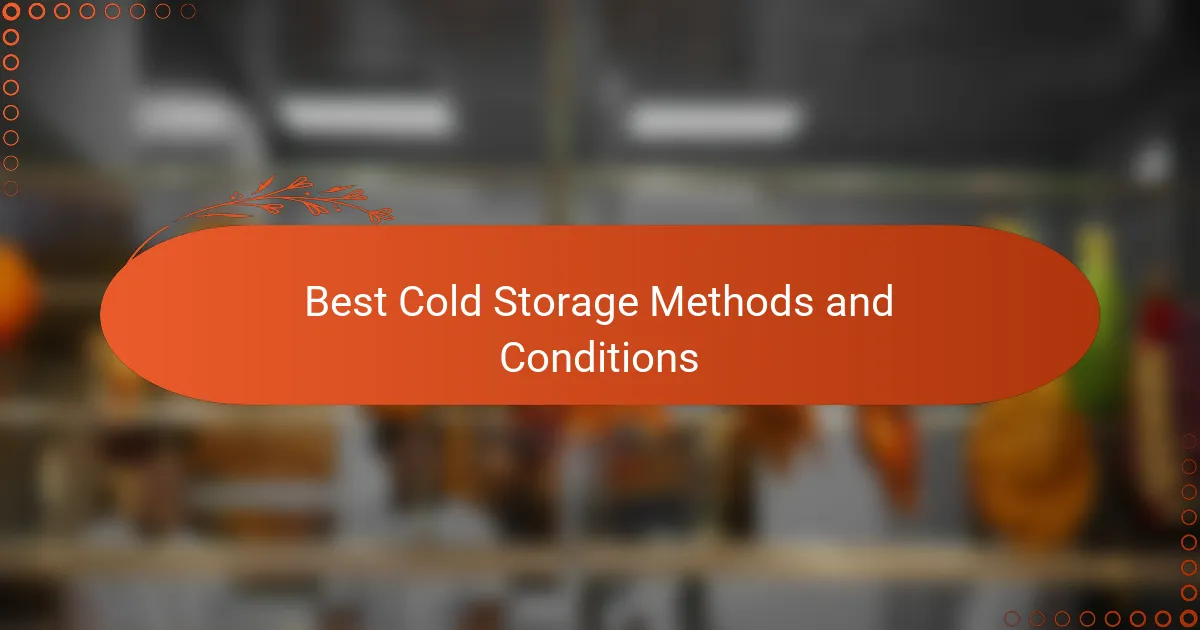
Best Cold Storage Methods and Conditions
I found that the best cold storage for root vegetables is maintaining a temperature between 32 and 40 degrees Fahrenheit. At first, I tried colder settings thinking lower was better, but I ended up freezing some potatoes, which ruined their texture. That taught me the importance of not just cold, but the right cold.
Humidity was another game-changer for me. Keeping the air around 85 to 95 percent humidity really helped prevent those roots from drying out. I used a simple damp cloth in my storage container, and it kept my carrots crisp far longer than I expected. Have you ever felt the disappointment of pulling out a shriveled carrot? Avoiding that became a personal victory.
I also learned that ventilation matters just as much as temperature and humidity. Without proper airflow, moisture can build up and cause rot. So, I made sure my storage bins had holes or were loosely covered, which balanced the environment perfectly. Creating these conditions felt like recreating nature’s embrace for my veggies, and that made all the difference.
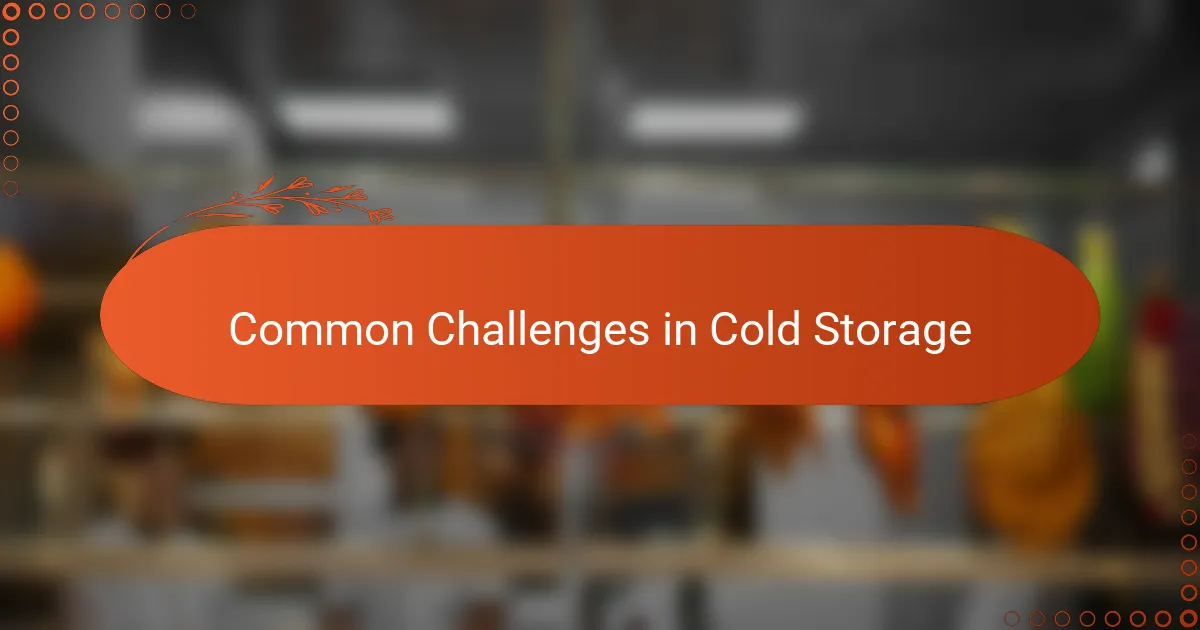
Common Challenges in Cold Storage
One of the biggest hurdles I faced was dealing with moisture control. Too much dampness led to mold sprouting faster than I could keep up with, while too little made my carrots and parsnips shrivel and lose their snap. It really taught me that finding that sweet spot of humidity isn’t as straightforward as it sounds.
Temperature swings were another tricky challenge. I remember waking up to a warmer basement after a storm and discovering my meticulously stored beets had softened and started to spoil overnight. That moment drove home how sensitive these root vegetables are to even slight changes in their environment.
And then there’s the constant threat of spoilage from one bad root affecting the whole bunch. I once ignored a bruised potato and ended up with a rotten mess that spread quickly. It pushed me to be more vigilant in checking each vegetable before storage—now, I see it as a vital step rather than a chore.
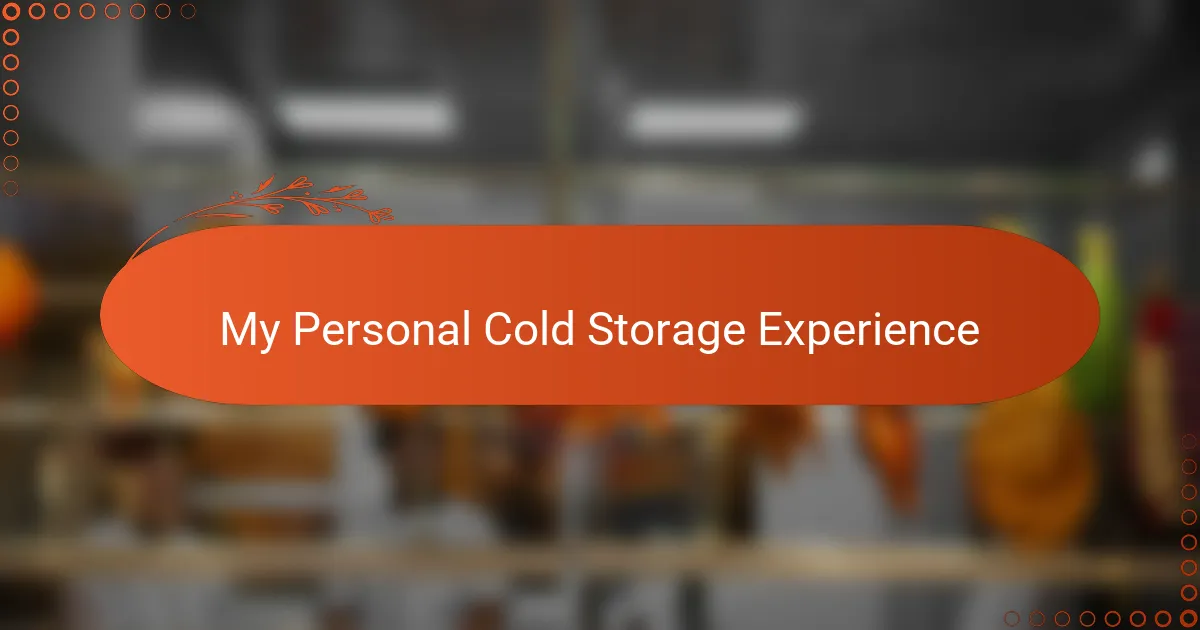
My Personal Cold Storage Experience
Cold storage quickly became a cornerstone of my homesteading routine after a handful of trial-and-error experiences. I remember the relief I felt the first winter when carrots I’d stored in a homemade root cellar stayed firm and sweet for nearly three months—something I never thought possible before. Have you ever peeled a carrot, only to find it woody and lifeless? That was my turning point.
Over time, I learned to read the subtle signs of my storage environment’s success. For instance, one season, high humidity created a few mold spots, forcing me to improve ventilation and rethink how tightly I sealed my containers. Those little adjustments taught me that cold storage is as much an art as it is a science, requiring attention and patience.
What surprised me most was the emotional satisfaction that came from preserving nature’s bounty until spring. Each time I reached into my cold storage, it felt like unlocking a treasure chest of freshness and flavors, reminding me why those early mornings in the garden were worth every effort. Would you believe that storing root vegetables changed how I approached meal planning during the coldest months? It really did.
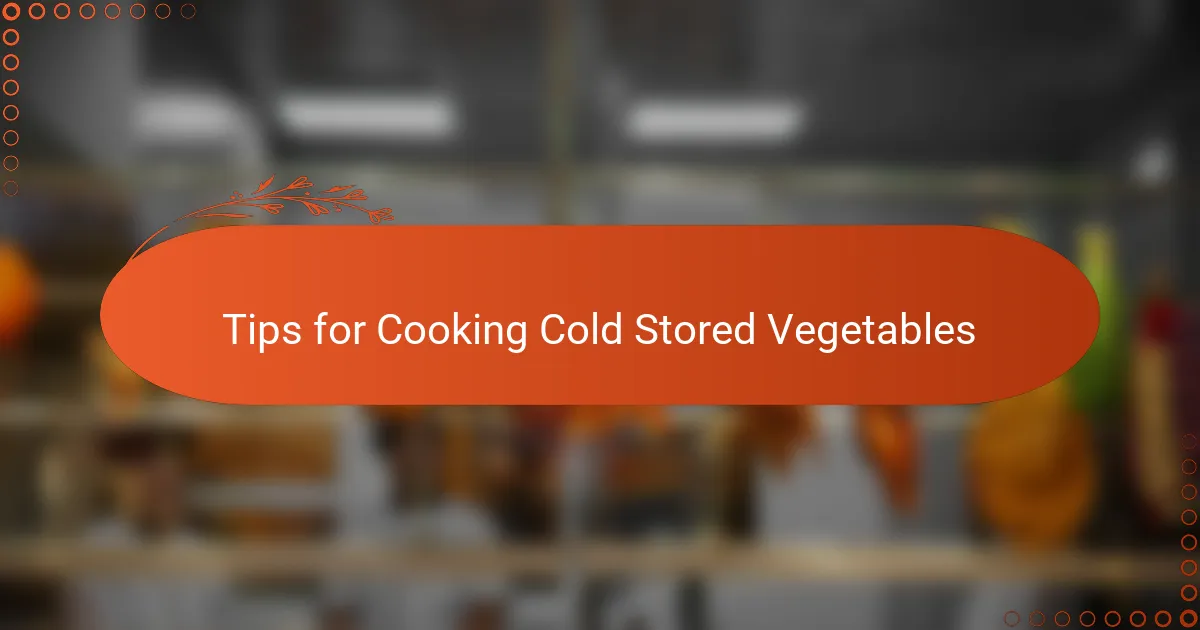
Tips for Cooking Cold Stored Vegetables
When cooking cold stored root vegetables, I found that starting gently is key. I usually let them come to room temperature before cooking to avoid that shock that toughens them up. Have you ever tried roasting a potato straight from the fridge only to find it’s dry inside? Trust me, a bit of patience pays off.
Another tip I swear by is adjusting cooking times slightly. Cold stored carrots or beets often retain more moisture and firmness, so they might need a few extra minutes to soften just right. I remember undercooking a batch once, and the surprise crunch wasn’t what I or my family expected—it’s a small tweak that enhances the comfort factor.
Lastly, I like to embrace the natural flavors that cold storage preserves by keeping my cooking simple. A splash of olive oil, a pinch of salt, and maybe some fresh herbs lets those earthy notes shine through. Why mask what the storage method has protected? Cooking cold stored veggies this way feels like honoring the season’s hard work.
